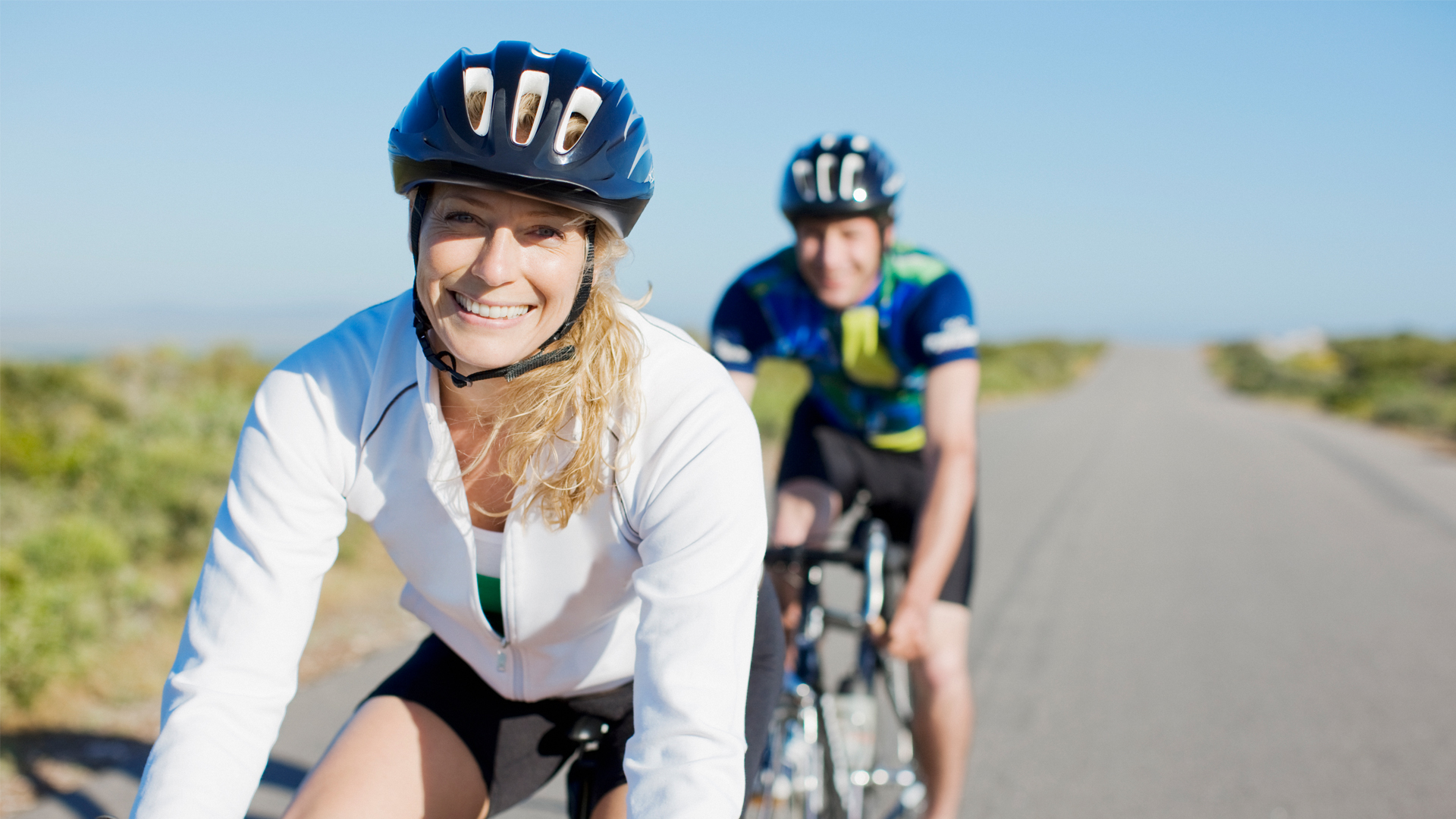5 safety tips all cyclists should follow
Stay safe on two wheels with our simple cycling safety guide.

If you’re commuting on your bike then you need to take cycling safety seriously. That means stocking up on the right gear, doing regular maintenance and knowing the rules of the road. It’s also important to recognize situations where you’re vulnerable, so you know how to position yourself in the lane.
This guide will run you through the basics, from making sure you’re visible in traffic to ensuring your bike fits you properly. If you also need to refresh your cycling gear, read through our round-ups of this year’s best bike lights and best bike helmets.
1. Always wear a helmet and make sure it fits
Most countries, including the US and the UK, don’t legally require you to wear a helmet, but cycling experts strongly recommend you do.
Rebecca Needham, England road safety manager for the Royal Society for the Prevention of Accidents, said: “We strongly recommend that cyclists wear a cycle helmet – as they can offer protection in the event of a collision. Rule 59 of the [UK] Highway Code states that 'you should wear a cycle helmet that conforms to current regulation, is the correct size and securely fastened'. However, it is important to remember that cycle helmets do not prevent crashes from happening.”
A good bike helmet will have an inner cage system, which can be tightened to ensure the helmet fits well. When your helmet is on you should be able to see the very edge of the helmet when you look up. The straps should form a ‘v’ directly under each ear lobe and you should be able to get no more than two fingers between your chin and the strap when it’s fastened.
Needham adds: “If a helmet is too small, it will sit too high and fail to protect the lower part of the head. If it is too big, the helmet will not be securely fitted to the cyclist’s head and could shift during a collision, exposing the cyclist’s head to damage. Although helmets can be purchased online, it is recommended that you visit your local bike shop to be correctly fitted for a helmet.”
If you have ever heard someone say that they had a bike accident and their helmet shattered, don’t be put off wearing one. Helmets are designed to break upon a hard impact, as this helps spread the force, making it less likely that you’ll suffer a serious injury.
Get instant access to breaking news, the hottest reviews, great deals and helpful tips.

2. Get the best bike lights available
Illuminating your bike isn’t just about obeying bike light laws. Having a good set of bike lights will make you more visible when you’re in traffic and can also help you see where you’re going if you're in unlit areas.
Both the US and the UK legally require you to have a white front-facing light and in the UK you also need a red rear-facing light attached to your seat post. In the US you can use a red rear reflector or a red rear light, but a light should be more noticeable than a reflector.
Remember that visibility can be poor during the day if the weather is bad, so always take your lights with you, even if you think you won’t need them. Steady beam lights make it easier for drivers to judge how far away you are, while flashing lights are more noticeable, so it’s worth having both. Flashing lights are allowed in the UK, but some US states don’t permit them. You can find out the rules for your state in this helpful guide from The League of American Bicyclists.
3. Make sure you wear the right cycling clothing

Lights are great at getting you seen, but having the right cycling clothing is also important. Wearing a light, reflective jacket or clothing and shoes with reflective strips will make you more visible to other road users when you’re out during day or nighttime. You can even get reflective elasticated covers to go over your backpack.
Choose a white helmet if you can as this is more visible to other road users. Make sure that nothing is hanging off your clothing, or it’s not so loose that it could get caught in your wheels or your chain, because this could cause an accident.
4. Your bike needs to fit you
Choosing a bike that’s actually the right size is an important part of cycling safety. If your bike is too big or too small for you then it will be harder to control. It’s wisest to go to your local bike shop, who can fit your bike properly. On bikes with top tubes (like road bikes for example), you need about 1in (2.5cm) clearance when standing over the bike with your feet flat on the floor. For bikes with no top tube (commuter hybrid bikes may be built like this) stand over the bike with your feet flat on the floor and lift the frame into your body. You should be able to move it about 1in (2.5cm).
“If you’ve already got a bike, get it checked to make sure it’s in a safe condition,” says Needham. “It’s best to get your bike serviced regularly at a cycle shop. Check your bike regularly yourself, especially before taking to the road.”
5. Stay safe around motor vehicles

The number of cyclists killed or seriously injured on the roads each year is very small in both the UK and the US, compared to the number of car drivers, but cyclists are still particularly vulnerable at junctions.
If you are waiting at a T-junction between a car or truck and the side of the road, the driver may not see you and turn their vehicle into your path when they pull away. This kind of side-on collision is sadly notorious for causing cycling deaths in large cities where there is a lot of traffic.
Because of this, it’s not wise to take up this position at junctions. Instead, if there is an advance box for cyclists then travel along the outside of the traffic to get to it and wait there. If there is no advance box it’s safest to wait behind the entire column of traffic, so that you’re last to pull off. This may not be a realistic option in heavy traffic and you may be tempted to wait between the bumpers of vehicles in front of you and behind you. But bear in mind that while car drivers will probably be able to see you in this position, a van or truck driver may not because they are seated so high up.
If you are struggling to find a way to pull away from a junction while cycling safely, remember you can always get off and push your bike over, using pedestrian crossings if they are available. Sometimes it’s safer to walk for a very short distance.
Rosee is a freelance writer. She reports on health, fitness, nutrition and well-being, with special interests in outdoor living, cycling, swimming and freediving. A journalist for more than 20 years, her work has appeared in Countryfile magazine, Mountain Biking UK, Live Science, Coach and on BikeRadar.com, among others.

